A Comprehensive Study on Homeless Veterans in the United States: Statistics, Causes, and Solutions
This study exposes the multifaceted issue of homelessness among veterans in the United States. It presents an in-depth analysis of current statistics, explores the underlying causes contributing to veteran homelessness, and proposes practical solutions to address and mitigate this pressing social challenge.
TRENDING & CONTROVERSIAL TOPICS


Introduction to the Homelessness Crisis Among Veterans
The issue of homelessness among veterans in the United States represents a significant challenge that demands urgent attention. As of the latest reports, there are approximately 37,252 homeless veterans on any given night, underscoring the magnitude of the crisis. These individuals, who once served their country with dedication and courage, now face a harsh reality of uncertainty and instability. The prevalence of homelessness among veterans not only highlights the systemic issues within social support structures but also the pressing need for comprehensive solutions.
Several key factors contribute to this alarming situation. Substance addiction is a prevalent issue, with many veterans turning to drugs or alcohol as coping mechanisms for the trauma they have endured. Mental health issues, including post-traumatic stress disorder (PTSD), depression, and anxiety, are also significant contributors. These conditions often go untreated or are inadequately addressed, exacerbating the risk of homelessness.
Moreover, the transition from military to civilian life can be incredibly challenging. Veterans often face difficulties in finding employment, securing affordable housing, and accessing necessary healthcare services. The lack of a robust support system further compounds these challenges, leaving many veterans without the resources they need to reintegrate into civilian society successfully.
Understanding and addressing the homelessness crisis among veterans is crucial to honor their service and sacrifice. It is not merely a matter of providing shelter but also of offering comprehensive support that addresses the root causes of homelessness. By focusing on integrated solutions that include mental health services, addiction treatment, employment programs, and affordable housing initiatives, we can begin to tackle this pervasive issue effectively.
Statistics on Homeless Veterans
The issue of homeless veterans remains a significant concern in the United States, with recent statistics shedding light on the scope and demographic nuances of this population. As of the latest data, there are approximately 37,000 homeless veterans across the country, accounting for about 8% of the total homeless population. This figure reflects a slight decrease from previous years, yet underscores the persistent challenges faced by those who have served in the armed forces.
Demographically, the homeless veteran population is predominantly male, with men comprising around 91% of this group. Female veterans, though fewer in number, face unique challenges and vulnerabilities that necessitate targeted intervention. Age-wise, a significant portion of homeless veterans are between 51 and 61 years old, reflecting the aging veteran population. However, younger veterans, particularly those who served in more recent conflicts, are also represented.
Racial disparities are evident within the homeless veteran community. African American veterans represent approximately 33% of the homeless veteran population, a stark contrast to their 12% representation in the overall veteran population. Similarly, Hispanic veterans are also disproportionately affected, making up about 12% of homeless veterans.
Geographically, homeless veterans are concentrated in urban areas, with states like California, Florida, and Texas having the highest numbers. California alone accounts for nearly 30% of all homeless veterans, highlighting the regional disparities in addressing this issue.
Over time, there have been noteworthy trends in the population of homeless veterans. While the overall number has decreased due to concerted efforts by federal and state programs, certain subgroups, such as post-9/11 veterans, have seen fluctuating numbers. This dynamic underscores the need for ongoing, adaptive strategies to effectively support all veterans at risk of homelessness.
The Impact of Addiction and Combat Trauma
The intersection of addiction and combat trauma significantly contributes to the prevalence of homelessness among veterans in the United States. Studies have consistently shown that veterans who have experienced combat are at a higher risk of developing substance abuse disorders. This vulnerability is often a result of the psychological aftermath of combat, including Post-Traumatic Stress Disorder (PTSD) and other mental health conditions.
According to data from the Department of Veterans Affairs, approximately 50% of homeless veterans suffer from substance abuse issues. This statistic underscores the critical link between addiction and homelessness within this population. Commonly abused substances include alcohol, opioids, and prescription medications, which are often initially used to manage pain or anxiety but can quickly lead to dependency and addiction.
Combat trauma frequently manifests as PTSD, a condition that affects around 11-20% of veterans who served in operations such as Iraqi Freedom and Enduring Freedom. PTSD is characterized by symptoms like severe anxiety, flashbacks, and uncontrollable thoughts about the traumatic events. To cope with these overwhelming symptoms, many veterans turn to substances, which can provide temporary relief but ultimately exacerbate their mental health issues and increase the likelihood of homelessness.
Other psychological factors also contribute to addiction among veterans. Depression, survivor's guilt, and the difficulty of reintegrating into civilian life can all lead to self-medication through substance abuse. The cyclical nature of addiction and mental health issues creates a challenging environment for veterans, where untreated psychological conditions feed into substance dependency, further complicating their ability to secure stable housing.
Understanding the correlation between combat trauma, addiction, and homelessness is crucial for developing effective interventions. Tailored support systems that address both the mental health and substance abuse issues of veterans are essential in breaking this cycle and helping veterans achieve long-term stability and well-being.
Veteran Suicides Linked to Homelessness and PTSD
Homelessness and Post-Traumatic Stress Disorder (PTSD) are significant contributing factors to the rising suicide rates among veterans in the United States. Research indicates that veterans are disproportionately affected by homelessness, with approximately 40,000 veterans experiencing homelessness on any given night. Compounding this issue, PTSD and addiction are prevalent among these individuals, creating a complex web of challenges that can lead to tragic outcomes.
A poignant statistic reveals that veterans represent 18% of all adult suicides in the U.S., despite constituting only 7% of the population. The interaction between homelessness and PTSD exacerbates this phenomenon. Veterans experiencing homelessness are more likely to suffer from PTSD, with studies showing that up to 50% of homeless veterans have a mental health diagnosis, predominantly PTSD. This mental health crisis is further aggravated by substance abuse issues, as many veterans turn to drugs or alcohol as a coping mechanism for their trauma.
The psychological toll of combat experiences cannot be understated. Exposure to life-threatening situations, witnessing the loss of comrades, and the constant state of alertness required in combat zones contribute to the development of PTSD. For many veterans, the transition to civilian life is fraught with difficulties, as they struggle to reintegrate and find stable housing and employment. The lack of a support system and the stigma associated with mental health issues often prevent veterans from seeking the help they desperately need.
These interrelated factors – homelessness, PTSD, and addiction – culminate in an alarming rate of suicides among veterans. Addressing this crisis requires a multifaceted approach that includes providing stable housing, mental health support, and addiction treatment. By understanding the underlying causes and the psychological impact of combat, we can begin to implement effective solutions to reduce veteran suicides and support those who have bravely served our country.
Government and Societal Support for Homeless Veterans
The issue of veteran homelessness in the United States has garnered significant attention from both the government and society. Various programs, policies, and initiatives are in place to address this complex problem. The U.S. Department of Veterans Affairs (VA) plays a pivotal role in providing support through several dedicated programs. The VA’s Homeless Veterans Program offers comprehensive services, including housing assistance, healthcare, and employment support, aimed at reintegrating homeless veterans into society.
One notable initiative is the HUD-VASH (Housing and Urban Development-Veterans Affairs Supportive Housing) program, which combines HUD housing vouchers with VA supportive services to help veterans and their families find and sustain permanent housing. This program has been instrumental in reducing homelessness among veterans, with over 90,000 vouchers issued to date. Additionally, the Supportive Services for Veteran Families (SSVF) program provides grants to private non-profit organizations and consumer cooperatives to offer a range of supportive services, including case management and assistance in obtaining VA benefits.
Despite these efforts, gaps in support persist. One significant challenge is the availability and accessibility of affordable housing. Many veterans face barriers such as poor credit history, lack of rental history, or criminal records, which hinder their ability to secure housing. Moreover, the need for mental health and substance abuse treatment remains high, with many veterans requiring specialized care that is not always readily available.
Successful interventions often involve collaborative efforts between government agencies, non-profit organizations, and community groups. For instance, the Veterans Community Project (VCP) in Kansas City has garnered attention for its innovative approach. The VCP builds tiny house villages that provide transitional housing for homeless veterans, along with access to comprehensive support services. This model has shown promise and is being replicated in other cities across the nation.
However, more resources and efforts are needed to address the root causes of veteran homelessness. Enhanced funding for affordable housing projects, expanded access to mental health and substance abuse treatment, and increased employment opportunities are essential. Strengthening partnerships between governmental bodies and community organizations can further amplify the impact of existing programs and ensure that no veteran is left without the support they deserve.
Solutions and Recommendations to Combat Veteran Homelessness
Addressing the homelessness crisis among veterans requires a comprehensive, multi-faceted approach. One of the critical areas of focus should be the enhancement of mental health and addiction services. Many veterans face significant challenges in these areas, which can lead to homelessness if left unaddressed. Expanding access to mental health care, including counseling and psychiatric services, and providing robust addiction treatment programs can significantly reduce the incidence of homelessness among veterans.
Increasing affordable housing options is another crucial strategy. Veterans often struggle to find housing that fits their budget, especially in high-cost areas. Policies aimed at expanding affordable housing, such as housing subsidies, low-income housing tax credits, and the development of veteran-specific housing projects, can help mitigate this issue. Additionally, providing more transitional housing solutions can offer veterans a stable environment as they adjust to civilian life.
Enhancing support systems for veterans during their transition back to civilian life is also vital. This can include job training programs, employment assistance, and educational opportunities. Programs that provide veterans with the skills and resources needed to secure stable employment can prevent homelessness by ensuring a steady income. Furthermore, peer support networks can offer emotional and social support, helping veterans navigate the often-challenging transition period.
Community involvement plays a significant role in creating a sustainable impact. Local governments, non-profits, and community organizations can collaborate to provide holistic support for veterans. Initiatives such as community outreach programs, veteran service organizations, and local shelters can offer immediate assistance and long-term support. Additionally, policy changes at the federal, state, and local levels are essential to ensure that veterans receive the care and support they deserve. Advocacy for veteran-friendly policies, increased funding for veteran services, and legislative measures to protect veterans' rights can drive systemic change.
Ultimately, a coordinated effort involving mental health services, affordable housing, supportive transition programs, community involvement, and policy advocacy is necessary to combat veteran homelessness effectively. Through these combined efforts, we can ensure that veterans receive the comprehensive care and support they need to lead stable, fulfilling lives.




















